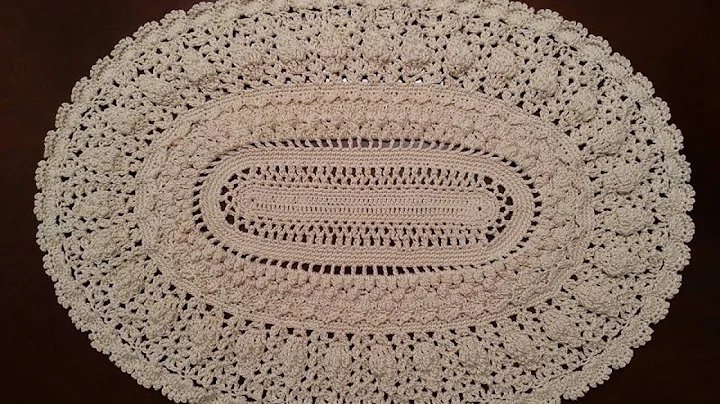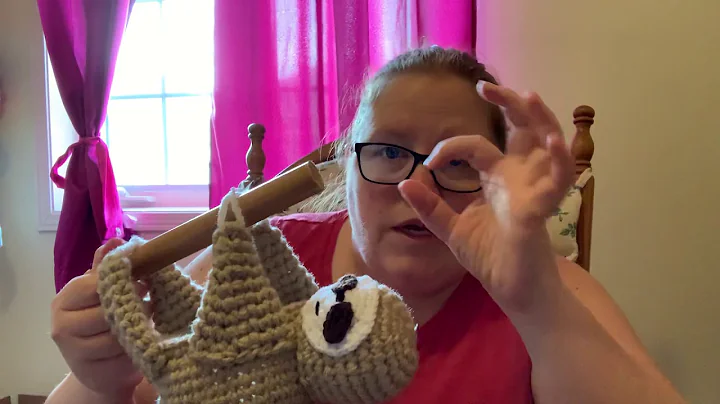Master Crochet Patterns with Easy-to-Follow Diagrams
Table of Contents
- Introduction
- Understanding Crochet Diagrams
- 2.1 Reading Crochet Diagrams
- 2.2 The Difference in Reading Directions
- 2.3 Breadcrumbs as a Guide
- Determining the Starting and Stopping Points
- 3.1 The Slip Stitch
- 3.2 Recognizing the Right Side
- 3.3 Recognizing the Left Side
- The Role of Chain Work in Crochet Diagrams
- 4.1 Starting with Chain Work
- 4.2 Double Back on the Chain for Row 1
- 4.3 Adjusting the Starting Side
- Following the Path in Crochet Diagrams
- 5.1 Reading Chains and Progressing Along
- 5.2 Following the Progression in Rows
- 5.3 Flexibility of Crochet Diagrams
- Conclusion
Understanding Crochet Diagrams: Reading and Interpreting the Direction
Crochet diagrams are essential visual tools that help crocheters understand and recreate intricate patterns. However, understanding how to read these diagrams, particularly in terms of direction, can be perplexing for many. In this article, we will delve into the nuances of crochet diagrams, exploring the right and left orientations, and uncovering the secrets to correctly interpreting the direction.
Reading Crochet Diagrams
Contrary to popular belief, crochet diagrams are not exclusively designed for right-handed individuals. They are, in fact, suitable for both left and right-handed crocheters. The key to deciphering the direction lies in the way the diagram is read. In North America and many other countries, we read language from left to right, progressing down the page and then back to the left before continuing further. However, crochet diagrams do not follow this conventional reading pattern.
The Difference in Reading Directions
Crochet diagrams should be approached as a roadmap, guiding crocheters through the pattern. The traditional left-to-right or right-to-left reading methods do not apply here. Instead, think of crochet diagrams as a trail of breadcrumbs. Each stitch can be followed in either direction, and both approaches will yield the same result.
Breadcrumbs as a Guide
To illustrate this point, let's examine a crochet stitch in the diagram. We can choose to follow the stitch in either direction, as long as it makes sense within the pattern. Whether we move left to right or right to left, inserting two double crochets into one and continuing in either direction will produce the desired outcome. The determining factor for the correct direction lies in where the stitch starts and stops.
By flipping the diagram upside down, we can visually acknowledge its identical nature. Although the writing may appear backwards, the crochet stitch can still be successfully recreated. The slip stitch can provide further clarity on the reading direction.
Determining the Starting and Stopping Points
The slip stitch's position within the chain can help us discern the reading direction. Typically, the slip stitch is found on the right-hand side of the chain. As experienced crocheters know, the chain is often followed by the next set of instructions in a round circle. The slip stitch is invariably the last step in this circle, indicating that the reading direction progresses from left to right. This pattern enables crocheters to crochet up the chain, slip stitch, and then proceed upwards following the path and chaining again before returning to the slip stitch.
Conversely, when the diagram is flipped, the slip stitch shifts to the left side of the chain. This prompts crocheters to start on the right and progress up until the slip stitch, which serves as the final instruction before joining and moving on to the next round. Following the stitches in the next stitch regardless of left or right direction ensures continuity and consistent results.
The Role of Chain Work in Crochet Diagrams
Chain work plays a significant role in crochet diagrams, specifically when determining the starting point of row one. Crocheters often double back on the chain to initiate row one. To identify the starting side, we need to focus on the chain that does not correspond to the first stitch. The chain portion leading up to row one demonstrates the side from which we should commence.
In a crochet diagram, the chain two progression leading to row one signifies the starting side. In this case, when we progress, we read the chains on the left side. However, it is crucial to note that some crocheters begin on the right side. Identifying the chain work leading to row one provides clarity on the designated starting point and facilitates smooth progression.
Following the Path in Crochet Diagrams
Crochet diagrams operate on the principle of following a path, rather than reading, as in a paragraph. Each line in the diagram guides crocheters on which stitches and chains to incorporate. By adhering to this path, crocheters can navigate the diagram seamlessly, accomplishing intricate patterns with ease.
The flexibility of crochet diagrams allows for alternate starting points. For instance, if the starting chain were on the opposite side, the pattern could still be effectively followed by adjusting the chain work accordingly. The progressive order of stitches and chains ensures consistent outcomes, regardless of the starting side.
Conclusion
In conclusion, understanding the distinction in reading directions in crochet diagrams is crucial for successfully recreating patterns. By following the visual path laid out by the diagram, crocheters can triumph over the perplexity surrounding directions. Whether it be starting with the slip stitch, recognizing the chain work leading to row one, or simply following the trail of stitches, comprehending the reading direction guarantees an enjoyable and fulfilling crochet experience. So, pick up your hooks and let the crochet diagram lead the way to limitless creativity.
Highlights
- Crochet diagrams are suitable for both left and right-handed crocheters.
- Crochet diagrams are read like a trail of breadcrumbs, not from left to right or right to left.
- The slip stitch's placement in the diagram indicates the reading direction.
- The chain work leading to row one helps identify the starting side.
- Following the path in crochet diagrams ensures consistent results.
- Crochet diagrams offer flexibility in starting points.
- Understanding the reading direction in crochet diagrams is vital for success.
FAQs
Q: Are crochet diagrams designed only for right-handed people?
A: No, crochet diagrams can be interpreted by both left and right-handed crocheters.
Q: How can I determine the reading direction in a crochet diagram?
A: The reading direction can be determined by observing the placement of the slip stitch within the diagram.
Q: Can I start a crochet diagram from either side?
A: Yes, crochet diagrams allow for flexibility in starting points, as long as the stitches and chains are followed in the correct order.
Q: What is the purpose of chain work in crochet diagrams?
A: Chain work is often used to start a new row or pattern. Identifying the chain work leading to row one helps determine the starting side.
Q: Do I need to follow a specific sequence while reading crochet diagrams?
A: Yes, crochet diagrams should be followed in a progressive order, ensuring each stitch and chain is incorporated correctly.
 WHY YOU SHOULD CHOOSE BEAUTYBADY
WHY YOU SHOULD CHOOSE BEAUTYBADY







